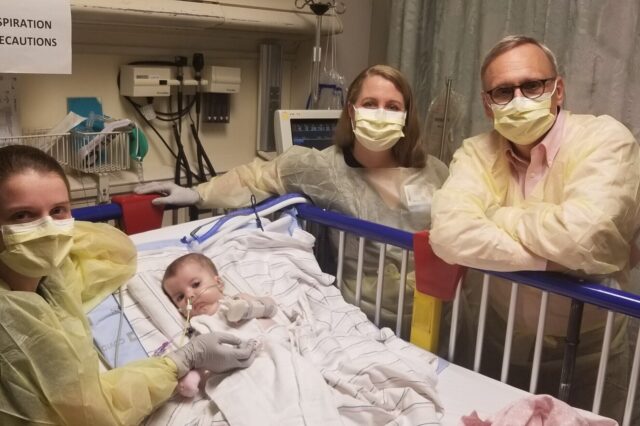Definition
Pneumonia is inflammation (swelling) and infection of the lungs or large airways.
Aspiration pneumonia occurs when food or liquid is breathed into the airways or lungs, instead of being swallowed.
Alternative Names
Anaerobic pneumonia; Aspiration of vomitus; Necrotizing pneumonia; Aspiration pneumonitis
Causes
Risk factors for breathing in (aspiration) of foreign material into the lungs are:
- Being less alert due to medicines, illness, surgery, or other reasons
- Coma
- Drinking large amounts of alcohol
- Taking illicit drugs (such as opioids) which make you less alert
- Receiving medicine to put you into a deep sleep for surgery (general anesthesia)
- Old age
- Poor gag reflex in people who are not alert (unconscious or semi-conscious) after a stroke or brain injury
- Problems with swallowing
Being hospitalized can increase the risk for this condition.
Materials that may be breathed into the lungs include:
The type of bacteria that causes the pneumonia depends on:
- Your health
- Where you live (at home or in a long-term nursing facility, for example)
- Whether you were recently hospitalized
- Your recent antibiotic use
- Whether your immune system is weakened
Symptoms
Symptoms may include any of the following:
Exams and Tests
Your health care provider will use a stethoscope to listen for crackles or abnormal breath sounds in your chest. Tapping on your chest wall (percussion) helps the provider listen and feel for abnormal sounds in your chest.
If pneumonia is suspected, your provider will likely order a chest x-ray.
The following tests also may help diagnose this condition:
Treatment
Some people may need to be hospitalized. Treatment depends on how severe the pneumonia is and how ill the person is before the aspiration (chronic illness). Sometimes a ventilator (breathing machine) is needed to support breathing.
You will likely receive antibiotics.
You may need to have your swallowing function tested. People who have trouble swallowing may need to use other feeding methods to reduce the risk of aspiration.
Outlook (Prognosis)
Outcome depends on:
- The health of the person before getting pneumonia
- The type of bacteria causing the pneumonia
- How much of the lungs are involved
More severe infections may result in long-term damage to the lungs.
Possible Complications
Complications may include:
- Lung abscess
- Shock
- Spread of infection to the bloodstream (bacteremia)
- Spread of infection to other areas of the body
- Respiratory failure
- Death
When to Contact a Medical Professional
Call your provider, go to the emergency room, or call the local emergency number (such as 911) if you have:
- Chest pain
- Chills
- Fever
- Shortness of breath
- Bluish discoloration of the lips or tongue (cyanosis)
- Wheezing
References
Musher DM. Overview of pneumonia. In: Goldman L, Schafer AI, eds. Goldman-Cecil Medicine. 26th ed. Philadelphia, PA: Elsevier; 2020:chap 91.
Shah RJ, Young VN. Aspiration. In: Broaddus VC, Ernst JD, King TE, et al, eds. Murray and Nadel's Textbook of Respiratory Medicine. 7th ed. Philadelphia, PA: Elsevier; 2022:chap 43.





